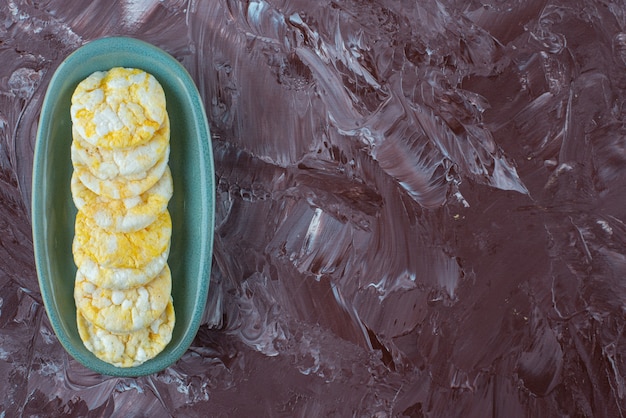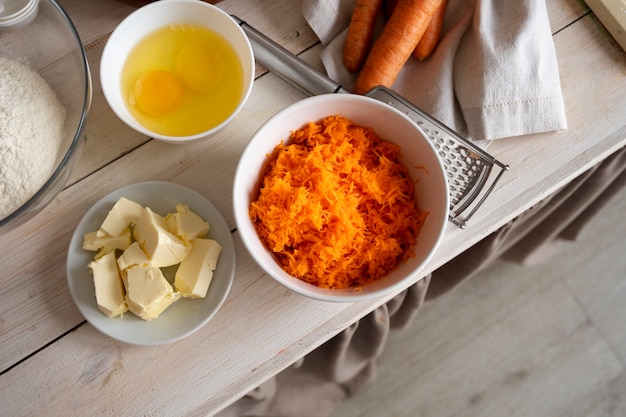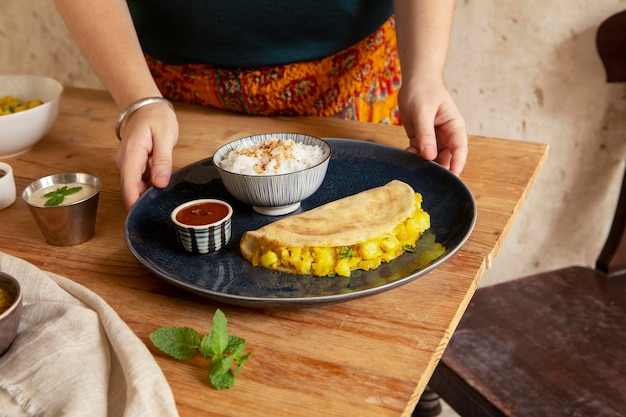Ah, mashed potatoes. The epitome of comfort food, a delightful side dish that warms the soul, and the perfect canvas for culinary creativity. I've been making mashed potatoes for years, and I've learned a thing or two along the way. One of the most crucial aspects is nailing the cooking time. Get it wrong, and you're left with lumps and resistance. Overcook them, and your potatoes turn into mush. So, let's embark on a journey into the world of potato perfection, exploring the art of achieving perfect mashed potato cooking times.
(Part 1) The Potato Powerhouse

Before we even think about boiling, we need the right potato companions. Not all spuds are born equal when it comes to mashing. You need a variety that'll give you that fluffy, dreamy texture. Here are a few of my personal favourites, the potatoes that have consistently delivered in my kitchen:
The Classics
- king edward: The undisputed champion of the mashed potato world. They hold their shape admirably, boast a gloriously fluffy texture, and possess a mild flavour that lets other ingredients shine. Think of them as the blank canvas of the potato world, ready for your culinary masterpiece.
- maris piper: Another champion contender, renowned for its excellent mashing abilities. These beauties cook up beautifully, offering a creamy texture and a slightly sweet flavour that adds a touch of complexity to your mashed potatoes. They're a bit more starchy than King Edwards, which means they'll give you even more fluffiness, perfect for those who like their mashed potatoes light and airy.
The Challengers
- Desiree: A favourite among many chefs for a reason. They have a slightly waxy texture, which means they maintain their shape even after cooking, making them ideal for a more substantial mash. They also add a touch of sweetness and a hint of nuttiness, giving your mashed potatoes a delightful depth of flavour.
- Nicola: Known for their creamy texture and slightly sweet flavour, Nicols are a fantastic option if you're after a smoother, less chunky mash. They're a bit more delicate than the others, so they need a little more care during the cooking process.
Remember, the best potato for you will ultimately depend on your personal preferences. Don't be afraid to experiment, have fun, and see what works best in your kitchen! It's all about discovering your own perfect potato match.
(Part 2) The Art of Preparation

Now that you've chosen your potato partners, it's time for the prep work. This step is crucial to ensure even cooking and that luscious, creamy texture that we all crave in our mashed potatoes.
Washing and Peeling
Give your potatoes a thorough wash under cold running water. If you're using potatoes with skin, give them a good scrub with a vegetable brush to remove any dirt or debris. This ensures a clean and flavourful base for your mash. If you're peeling, use a sharp peeler and make sure you remove all the skin, as it can add a slightly bitter flavour. Take your time and ensure a smooth, even peel.
The Cutting Game
This is where we really start to get into the art of potato preparation. Cutting your potatoes into even-sized pieces is absolutely key to even cooking. I prefer to cut them into chunks about 2-3 inches in size. This allows them to cook through without becoming mushy. It's a bit like a culinary puzzle, ensuring each piece is ready to become part of your perfect mashed potato creation.
(Part 3) The Boiling Point

The moment has arrived: boiling time! This is where the magic truly begins. We want to cook our potatoes until they're tender enough to pierce easily with a fork. Overcooking will turn them into mush, so it's essential to keep a watchful eye on the process. It's like a dance, with you and the potatoes swaying in perfect rhythm.
The Water Works
Fill a large saucepan with cold water, about 2-3 inches above the potatoes. Add a generous pinch of salt to the water. This will help season the potatoes and prevent them from sticking together, ensuring an even cooking process. Bring the water to a rolling boil over a high heat. The anticipation builds as you watch the water bubble and froth, knowing that your mashed potatoes are on their way to perfection.
The Boiling Time: A Guide
The boiling time for potatoes varies depending on the variety and size of the pieces. Here's a general guideline to get you started, but remember, each potato has its own personality, so it's important to trust your senses.
| Potato Variety | Size of Pieces | Boiling Time |
|---|---|---|
| King Edward | 2-3 inches | 15-20 minutes |
| Maris Piper | 2-3 inches | 15-20 minutes |
| Desiree | 2-3 inches | 18-22 minutes |
| Nicola | 2-3 inches | 18-22 minutes |
Remember, these are just guidelines. Always check the potatoes with a fork to ensure they're tender. If you're unsure, it's better to err on the side of undercooking. You can always cook them a bit longer, but you can't undo overcooking.
(Part 4) The Drain and Chill
Once the potatoes are cooked to perfection, drain them immediately. Don't let them sit in the hot water for too long, as this will make them mushy. I like to drain them in a colander and let them steam for a few minutes to allow any excess water to evaporate. This helps them breathe and become slightly drier, leading to a smoother and more velvety mashed potato texture.
The Cooling Down
Once the potatoes are drained, give them a quick cool-down. I find that letting them sit for 5-10 minutes in the colander helps them to steam and become slightly drier, preventing them from becoming too wet and sticky when mashed. It's a simple step, but it makes a world of difference in the final texture of your mashed potatoes.
(Part 5) The Mashing Magic
The moment of truth! This is where you can get creative and add your own personal touch to your mashed potatoes. But before we get into the flavour explosion, let's talk about tools.
The Mashing Tools
There are many different tools you can use to mash potatoes. The classic potato masher is a reliable choice, offering a slightly chunky texture that some people prefer. A handheld electric mixer is another option, providing a smoother texture for those who like a more velvety mash. I've even used a fork in a pinch! The important thing is to find what works best for you and your desired texture. Experiment and see which tool helps you achieve your mashed potato dreams.
The Mashing Method
There are two main methods for mashing potatoes. The first is the classic method, using a potato masher to create a slightly chunky texture. This method adds a bit of rustic charm to your mashed potatoes, reminding you of the simple pleasures of home cooking. The second is the smoother method, using an electric mixer or a food mill to create a silky smooth texture. This method is perfect for those who prefer a more elegant and refined mashed potato experience.
I'm a big fan of the classic method, as I love the slightly chunky texture it creates. But if you're looking for something smoother, then go for the electric mixer or food mill. Ultimately, the choice is yours, and it all comes down to what you find most satisfying.
(Part 6) The Flavour Explosion
Now, the fun part! This is where your mashed potatoes can truly shine! There are endless possibilities for adding flavour to your mashed potatoes, making them a blank canvas for culinary creativity. Here are a few of my personal favourites, the flavour combinations that have consistently delighted my taste buds:
The Classics
- Butter: A classic addition for good reason. Butter adds a rich, creamy flavour that complements the potatoes perfectly. It's like the comforting hug of flavour that every mashed potato deserves.
- Milk or Cream: This adds moisture and a velvety texture. I often use a combination of milk and cream for the best of both worlds, achieving a balanced flavour and texture. It's a simple addition, but it makes a world of difference.
- Salt and Pepper: A must-have! Seasoning brings out the flavour of the potatoes and makes them more satisfying. It's the final touch that transforms your mashed potatoes from good to great.
The Adventurous
- Cheese: A favourite among many, adding a touch of sharpness and decadence to your mashed potatoes. Try cheddar, parmesan, or even a creamy goat cheese for a unique flavour experience. Remember, the world of cheese is your oyster, so be adventurous and explore the possibilities.
- Garlic: A pungent and flavourful addition, adding a touch of warmth and depth to your mashed potatoes. Try adding roasted garlic for a sweet and savoury flavour. The sweet and savoury dance together on your tongue, creating a symphony of taste.
- Herbs: Fresh or dried herbs can add a touch of brightness and freshness to your mashed potatoes. Try chives, parsley, dill, or rosemary. Each herb adds its unique flavour profile, allowing you to tailor your mashed potatoes to your preferences.
Experiment and find your perfect flavour combination. Don't be afraid to get creative and explore new flavour combinations! The world of mashed potatoes is full of endless possibilities, waiting to be discovered.
(Part 7) The Finishing Touches
With your mashed potatoes ready, it's time to add those final touches that make them truly special. It's like adding the finishing touches to a masterpiece, transforming your mashed potatoes from good to extraordinary.
The Temperature Check
Your mashed potatoes should be served warm, but not too hot. If they're too hot, they can become runny. I like to warm them gently in a saucepan over low heat, stirring occasionally, until they're just warm enough to eat. It's a delicate dance between heat and texture, ensuring your mashed potatoes are perfect for every bite.
The Plating Perfection
There are no rules when it comes to plating your mashed potatoes. You can serve them in a simple bowl, dollop them onto a plate, or even create a fancy swirl. Get creative and have fun! Let your inner artist shine through and create a presentation that reflects your personal style and the culinary masterpiece you've created.
(Part 8) The Mashed Potato Memory Bank
Here are some tips and tricks I've picked up over the years, from my own experiments and from others who share my love of mashed potatoes. It's a collective wisdom, passed down through generations of mashed potato enthusiasts, ensuring that each batch is better than the last.
- Don't over-mash. If you mash them too much, they'll become sticky and gummy. Aim for a slightly chunky texture. It's about finding the perfect balance between smooth and chunky, ensuring that each bite is a delightful experience.
- Don't add too much milk or cream. Too much liquid will make your mashed potatoes runny. Start with a small amount and add more if needed. It's a delicate balance, ensuring that your mashed potatoes have a creamy texture without being too thin.
- Keep it simple. Sometimes the best mashed potatoes are the simplest ones. Just a touch of butter, milk, salt, and pepper can create a delicious dish. It's a testament to the power of simple ingredients, allowing the potatoes to shine.
- Get creative with your toppings. Try adding crispy bacon, roasted vegetables, or even a poached egg for a luxurious touch. It's about pushing the boundaries of flavour and adding a touch of elegance to your mashed potatoes.
- Don't be afraid to experiment. The possibilities are endless! Have fun and create your own perfect mashed potato recipe. It's your culinary journey, so embrace the unknown and discover new flavour combinations that will delight your taste buds.
FAQs
Q: What happens if I overcook my potatoes?
If you overcook your potatoes, they will become mushy and lose their texture. They may also have a slightly starchy taste. It's like watching your culinary dream crumble before your eyes. It's best to err on the side of undercooking, as you can always cook them a bit longer if necessary. But once overcooked, it's difficult to reverse the damage.
Q: Can I use any type of potato for mashed potatoes?
Not all potatoes are created equal when it comes to mashing. You want to use a variety that's known for its fluffy texture, such as King Edward, Maris Piper, Desiree, or Nicola. waxy potatoes, such as Charlotte or Anya, are better suited for salads or roasting. They're more resistant to mashing, so they'll just end up with a clumpy texture.
Q: What if I don't have an electric mixer?
You can use a classic potato masher to create a slightly chunky texture. If you're looking for a smoother texture, you can use a fork or a food mill. It's all about using what you have and making the most of it. Sometimes the most basic tools can deliver the most delightful results.
Q: What can I do if my mashed potatoes are too dry?
If your mashed potatoes are too dry, you can add a little bit of milk or cream until they reach the desired consistency. It's about achieving that perfect balance of moisture, creating a smooth and creamy texture that melts in your mouth.
Q: How long can I store mashed potatoes?
Mashed potatoes can be stored in the refrigerator for up to 3 days. To reheat, simply warm them gently in a saucepan over low heat, stirring occasionally. It's like bringing your mashed potatoes back to life, ensuring they're warm and delicious every time.
There you have it, my friends! The secrets to perfectly cooked, flavourful, and comforting mashed potatoes. Now go forth and create your own masterpieces. Happy mashing!
Everyone is watching

Prime Rib Roast Cooking Time Chart: Per Pound Guide
Cooking TipsPrime rib roast. Just the name conjures images of lavish dinners, crackling fires, and hearty laughter. It’s ...

How Long to Bake Potatoes in the Oven (Perfect Every Time)
Cooking TipsBaked potatoes are a staple in my kitchen. They're incredibly versatile, delicious, and surprisingly easy to m...

Perfect Rice Every Time: The Ultimate Guide to Cooking Rice
Cooking TipsAs a self-proclaimed foodie, I've always been a bit obsessed with rice. It's the foundation of countless cuisi...

The Ultimate Guide to Cooking Asparagus: Tips, Techniques, and Recipes
Cooking TipsAsparagus. The mere mention of this spring delicacy conjures up images of vibrant green spears, crisp and burs...

Ultimate Guide to Cooking the Perfect Thanksgiving Turkey
Cooking TipsThanksgiving. Just the word conjures up images of overflowing tables laden with delicious food, the scent of r...
